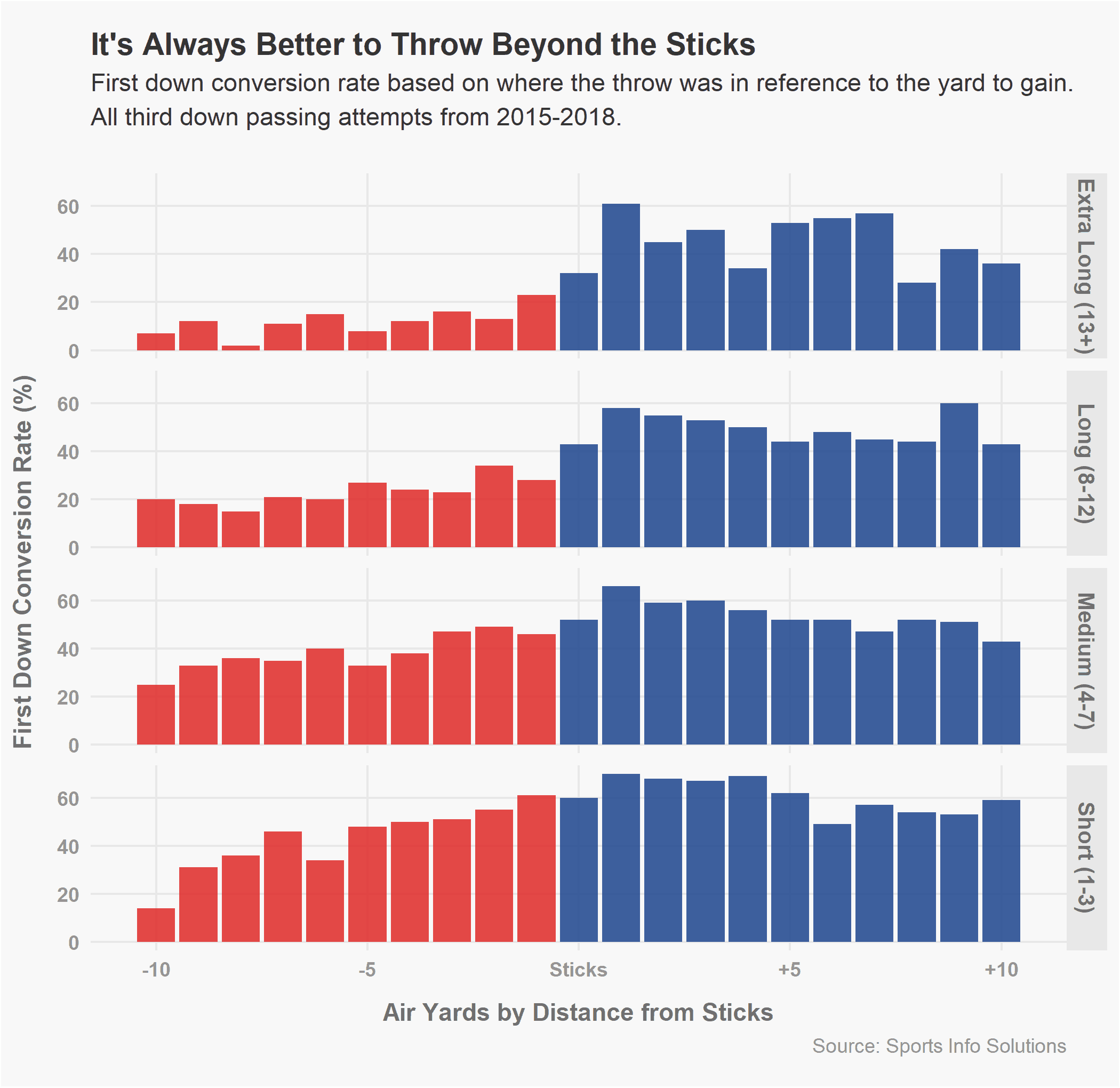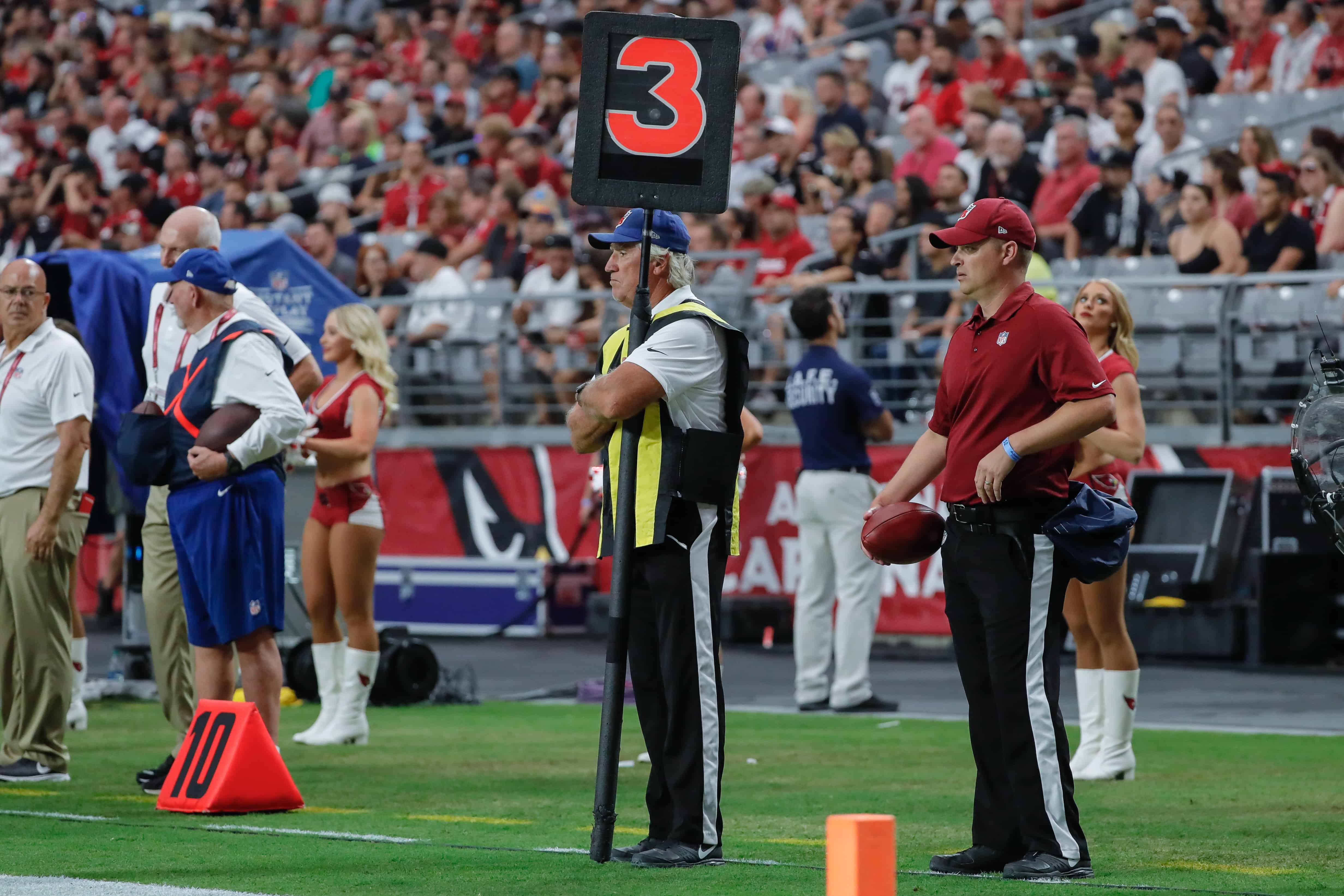- Throws beyond the line to gain consistently convert more first downs
- Team tendencies don’t align with the numbers
- Teams that were more aggressive tended to have higher conversion rates
As data collection has improved over recent years in the NFL, air yards have become a fixture in both player-level and team-level analysis. In previous research we looked at what air yards can tell us about how teams are behaving in third-and-long situations, and whether or not they are aggressive enough (they’re not). That research focused only on third-and-10+, though. Does the same pattern hold up when looking at all third down attempts?
Air Yards and Third Down Conversions
To handle this, third down attempts are grouped into four buckets by distance to go, and air yards are converted into a plus/minus of sorts in reference to where the sticks are. A throw exactly on the yard to gain would be a zero, two yards would be plus-2 and so on. Using this, we can calculate league-level conversion rates based on how far in front of or beyond the sticks a team throws it.

Notably, it is beneficial to push the ball beyond the yard to gain. Regardless of the distance to go, the first down conversion rate on throws that travel at least to the sticks is higher than on throws short of the sticks.
This isn’t a shocking finding. Intuitively, it makes sense that being more aggressive would also tend to lead to more first downs. What might be surprising is that a difference of as little as a yard or two can make a drastic difference, especially in longer down and distances. In third and 13+, the first down conversion rate of throws that were one yard short of the line to gain resulted in a first down about 20% of the time, while throws one yard beyond the sticks resulted in a first down around 60% of the time. The difference of two air yards tripled the likelihood of a conversion.
















